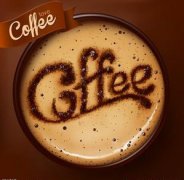Coffee cultivation techniques for cultivating strong seedlings of Coffee

Coffee cultivation techniques
First, cultivate strong seedlings of coffee
The main results are as follows: 1. The selection of nursery land is close to water source, convenient for transportation, loam or sandy loam with loose and fertile soil, deep soil layer and good drainage, paddy field with PH value 6mur6.5 or early nursery land, and close to coffee garden. The soil depth is 0.20-0.30 meters. After hoing and removing stones, the ridge moisture is 1.0-1.2 meters wide. 2 meters, about 10 meters long, and apply rotten and finely crushed farm manure on the soil moisture, 3000 kg per mu. The soil and fertilizer are mixed and used as nutrient soil for bagging. The nutrient soil is 0.15x0.20m. Put the nutrient soil into bags, each row of 12 bags neatly placed, upright. 60-70,000 trees can be placed per mu, and shade branches are planted at a distance of 4 meters, with a height of 2. 5%. The shade density of 0 meters is 75%, and the nursery will be built.
2. The arrangement and sowing of the budding bed, the nursery that has been hoed and fertilized will be separated by 0. 5%. 50 meters, moisture width 1. 20 meters, height 0. 15-0. 20 meters. After disinfecting the soil with carbendazim, add 0. 05-0. 10m thick river sand. Fuba planted 7963 new varieties, about 5000 seeds per kilogram. Soak the seeds in 40-45 ℃ warm water for 3 minutes, then soak them in clean water for 24 hours. After taking out the seeds, sow the seeds evenly on the sand bed without accumulation. The sowing rate is 0.50-0.60kg / m2. The seeds are pressed into the sand with a plank and covered with 0.01-0.02m river sand, then covered with straw and watered thoroughly. The seeds were unearthed 80 days after sowing, and the seeds should be watered regularly before they were unearthed to prevent drought and uncover the grass in time after the seedlings were unearthed.
3. Seedling management after transplanting nutrition bags, diseases and insect pests should be controlled before transplanting bags, carbendazim and methyl thiophanate should be used to control seedling blight, and dimethoate should be used to control diseases and insect pests. When the cotyledons of young seedlings are fully unfolded, they can be transplanted. Soak the seedlings with water before pulling out the seedlings, reduce the root damage when pulling the seedlings, select small seedlings with stable and robust cotyledons, hold 0.10 meters of water in containers such as buckets or pots, put the seedlings neatly into the containers for preservation, drench the nutrition bags full of nutritious soil with water before transplanting seedlings, and require straight roots and seedlings after the seedlings are inserted into the nutrition bags. Root water is poured immediately after planting. During the nursery period, attention should be paid to the removal of weeds and prevention of diseases and insect pests. Human and animal feces and urine 2Mel were applied three times, poured with water at the proportion of 1:3, and foliar spray of 0.5% Yunda 120. when the plant height is 0. 15 meters, the real leaves can be transplanted with 5 pairs, and the seedlings should be refined for 3 weeks before transplanting.
II. Reclamation of coffee gardens
1. The quality of planting ditch excavation affects the soil and water conservation of coffee garden, the implementation of agricultural technical measures, the growth and yield of coffee trees, which should be seriously implemented. According to the excavation method, the gentle slope can be excavated from the slope to the slope, while the steep slope should be excavated from the slope to the slope, which can minimize the phenomenon that the soil of the upper ditch rolls into the next ditch. The specification of planting ditch is 0. 60 meters wide, 0. 40 meters wide and 0. 50 meters deep. When digging, dig up the topsoil on the ditch surface. Pile up on the top of the ditch, and then dig out the bottom soil in the ditch and pile it at the bottom of the ditch, the edge of the mouth below the depth of the ditch shall prevail, the roots and stones in the planting ditch need to be cleared out, and the trees between the platforms should be retained and shall not be cut down at will. The excavation time should be from October before winter to February in spring, and it should be completed in May at the latest.
2. Return to the soil and build the platform. The thickness of the first soil return is 0. 20 meters, and then 1500 kg of farm manure + 100kg of phosphate fertilizer is applied per mu, and the bottom fertilizer is evenly mixed. After the second return, the trough will be filled with a flat ladder, which requires the Mesa to be 1. 5% wide. 20 meters, the Mesa is tilted by 2m and 3 degrees. After finishing the table, the lime powder was spread evenly on the table, in order to adjust the soil PH value, enhance the soil microbial activity and improve the availability of soil mineral nutrients.
3. The specifications of digging holes and applying base fertilizers are generally 0.40 meters × 0.40 meters × 0.30 meters. 0.10-0.25 kg of calcium superphosphate was applied in each hole before planting. If there are conditions, add 3-5 kg of organic fertilizer to each hole, and the fertilizer and soil are fully mixed evenly, otherwise fertilizer damage will occur after coffee seedlings are planted.
III. Planting of coffee
The planting time is from June to July after the beginning of the rainy season. If the planting day is cloudy or light rainy, it can be planted all day. If the planting day is sunny, it should be planted before 11:00 and after 04:30 in the afternoon.
Seedlings should choose 5 pairs of true leaves, with a height of more than 0.15 meters, and strong seedlings without branches. The row spacing of planting plants is 1 meter × 2 meters, and 333 plants are planted per mu. After cutting off the bottom 0.03 meters, the seedlings are stripped of the nutrition bag and put into the hole. The nutrient soil is highly consistent with the surface of the platform. The fine soil is layered backfilled after the seedlings are righted, and then gently compacted after covering the soil, so that the nutrient lump can be effectively combined with the surrounding soil.
After the coffee was planted, the platform was fully trimmed to keep the table clean, flat and introverted. After 10 days of planting, the cavities, dead seedlings and damaged seedlings were found and replaced in time to achieve the whole seedling.
IV. Management of coffee plantations
The main results are as follows: 1. The root system of intercropping coffee elongates with the growth of plant, and the root growth range is beyond the range of planting hole half a year after planting. Therefore, it is best to dig deeply from half a year to one year before the rainy season comes, and the depth should be 0.4-0.5 meters according to soil conditions and root distribution.
2. To fertilize coffee, we should master the type and amount of fertilizer, not only an appropriate amount, but also to prevent excessive. Insufficient fertilization will lead to yellow leaves, withered shoots, fruit drop, premature senescence and other phenomena; excessive fertilization will not only cause waste, but also worsen the soil. Young coffee tree is a vegetative growth period, fertilization should be mainly nitrogen and phosphorus fertilizer, proper application of potassium fertilizer to promote root and branch growth, accelerate the formation of crown, cultivate good tree type, lay the foundation for high yield, but fertilization should grasp the principle of frequent application and thin application. The fertilization of coffee trees should be based on nitrogen and potassium fertilizer, combined with phosphate fertilizer and other element fertilizer. The scheme of fertilization is as follows: 20 grams of urea per tree for the first time 20 days after survival, and 30 grams of mixed nitrogen, phosphorus and potassium fertilizer for the second time before the end of rainy season (September). In the second year, the first fertilization was from February to March, the second from May to June, and the third from August to September, with 100 grams of nitrogen, phosphorus and potassium mixed fertilizer per plant each time. In the third year, fertilization was combined with weeding from February to March for the first time, and oil was applied 1000 grams per plant, the second time was from May to June, and the third time was from August to September.
Fertilization of coffee trees: the first time from February to March was topdressing 1500 g per plant, and the second, third and fourth times were in May, July and September, respectively.
The fertilization method of coffee tree: the young tree is 0.20 meters away from the root base, and the adult tree is digging a ring or semi-ring fertilizer ditch at the dripping place of the plant crown, 0.20 meters wide and 0.20-0.30 meters deep, and then cover the soil immediately after fertilization.
3. The table of the weeding coffee garden should be kept clean and free of weeds at any time, so as to avoid the competition between grass and coffee for nutrients. Weeding is generally done once a month. Weeding is carried out 0.30 meters away from the root base with a hoe combined with intermediate ploughing, and the root base is pulled out by hand within 0.30 meters to avoid hurting the root. Weeds and branches on coffee stalks are not allowed to be uprooted with hoes to avoid damage to platform ladders and soil erosion. Proper retention of weeds and trees on stems can provide shade, conserve soil and water, and reduce the damage of diseases and pests to coffee.
Important Notice :
前街咖啡 FrontStreet Coffee has moved to new addredd:
FrontStreet Coffee Address: 315,Donghua East Road,GuangZhou
Tel:020 38364473
- Prev

Brief introduction of Coffee planting History and planting Technology
In China, according to historical records, coffee trees were planted in Taiwan for the first time in 1884, and coffee cultivation in mainland China began in Yunnan. In 1902, a French missionary named Tian introduced seeds from Yingong, Binchuan County, Yunnan Province. it was successfully planted in a place called Zhu Kula, a tributary of the Jinsha River. The commercial cultivation of coffee in Yunnan began in 1985.
- Next

Prevention and control of coffee rust is the main disease of coffee.
1. Coffee rust is the main disease of coffee, the most harmful, the damaged plants, light reduced yield, serious death. Coffee rust is mainly harmful to leaves and sometimes to young fruits and twigs. After the leaves were infected, many light yellow spots appeared at first and enlarged in the form of water stains, followed by orange-yellow powdery spores on the back of the leaves, and there was a light green halo around the disease spots, which gradually expanded or connected in the later stage.
Related
- Beginners will see the "Coffee pull flower" guide!
- What is the difference between ice blog purified milk and ordinary milk coffee?
- Why is the Philippines the largest producer of crops in Liberia?
- For coffee extraction, should the fine powder be retained?
- How does extracted espresso fill pressed powder? How much strength does it take to press the powder?
- How to make jasmine cold extract coffee? Is the jasmine + latte good?
- Will this little toy really make the coffee taste better? How does Lily Drip affect coffee extraction?
- Will the action of slapping the filter cup also affect coffee extraction?
- What's the difference between powder-to-water ratio and powder-to-liquid ratio?
- What is the Ethiopian local species? What does it have to do with Heirloom native species?

